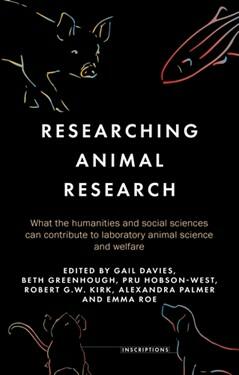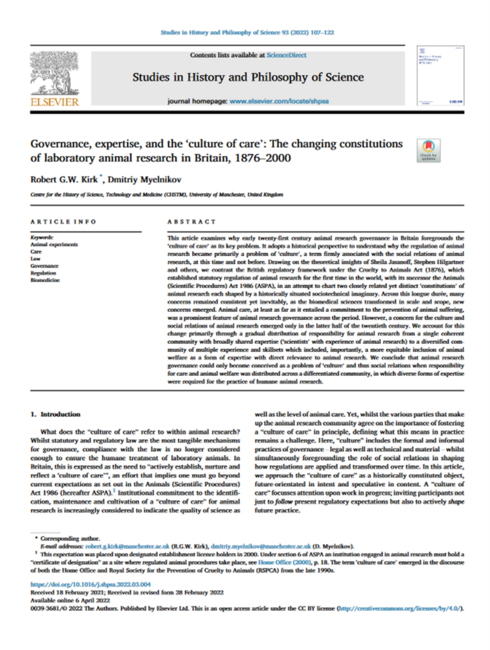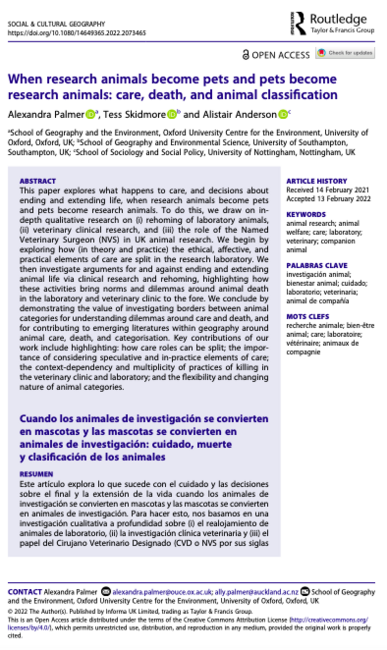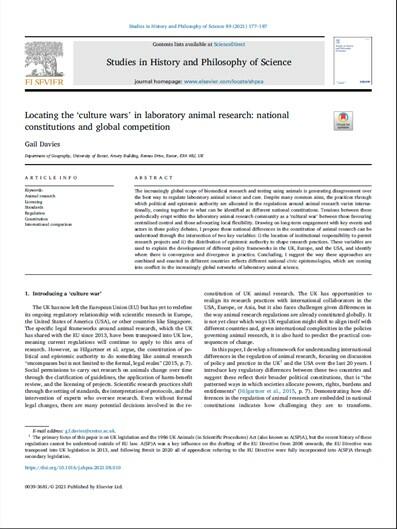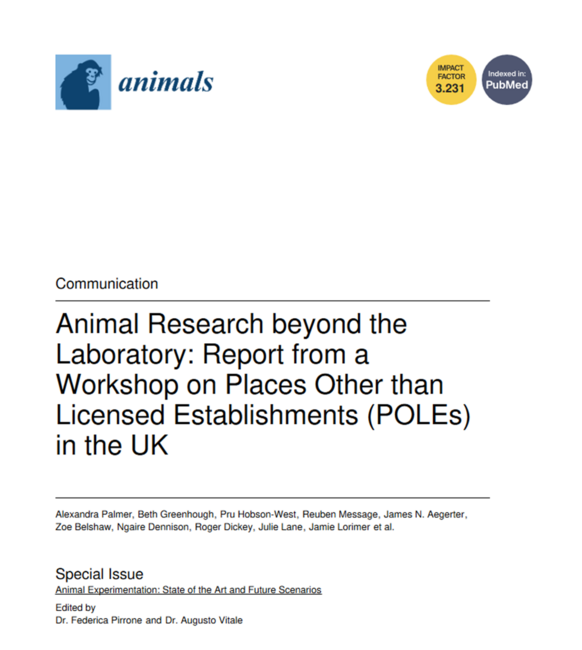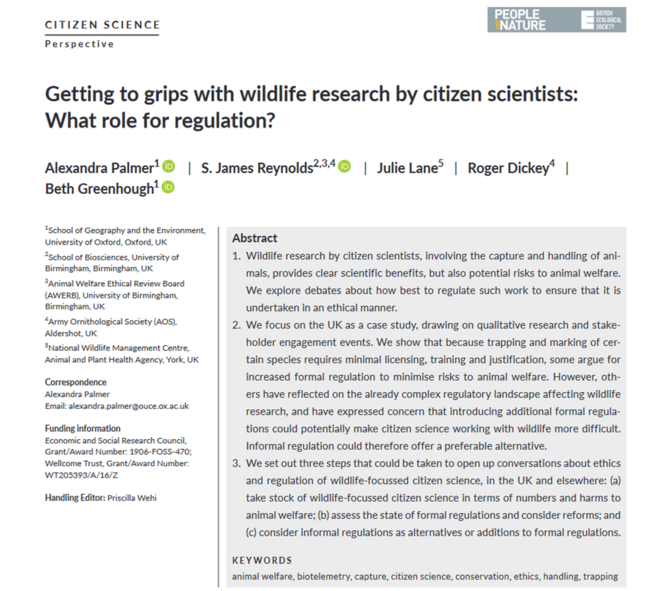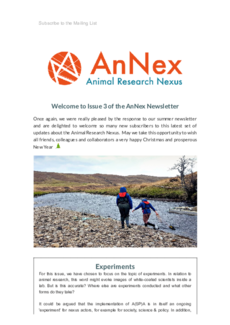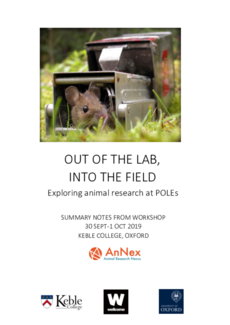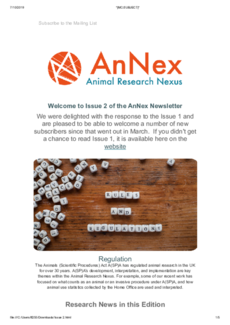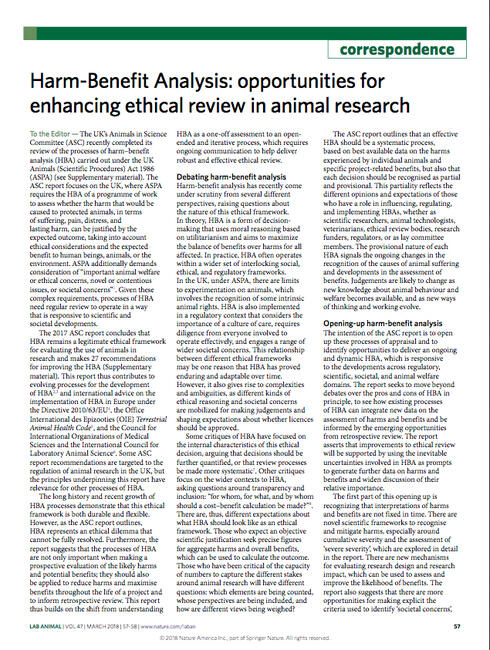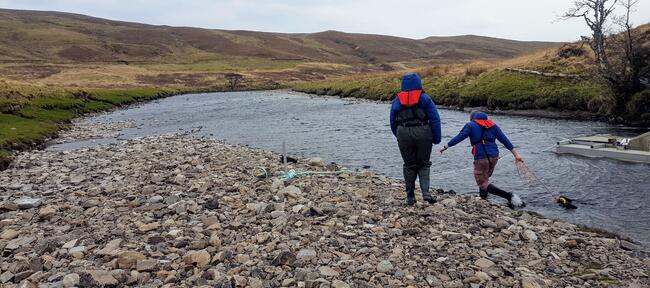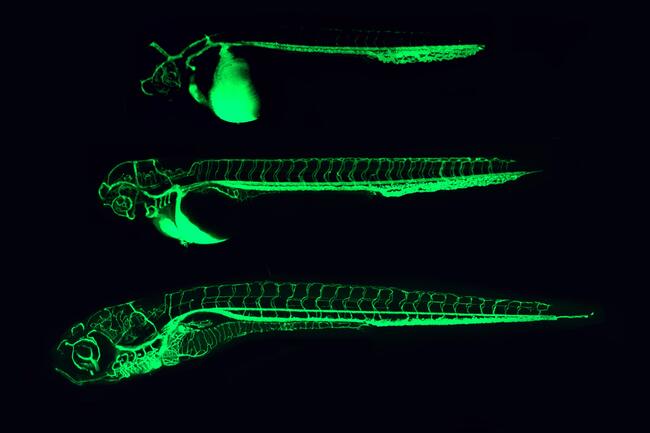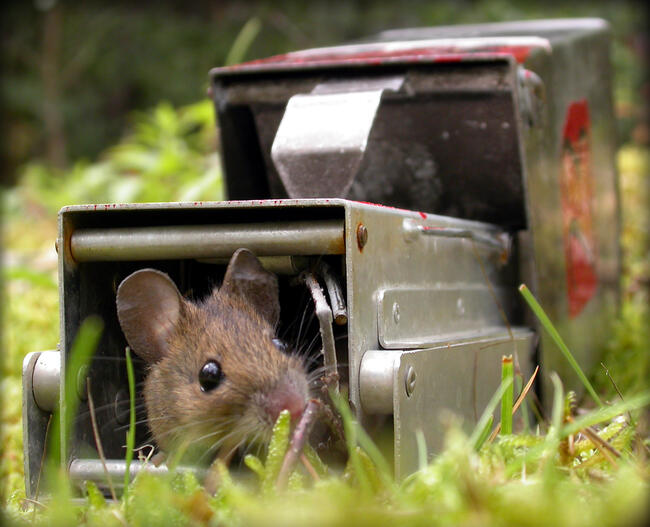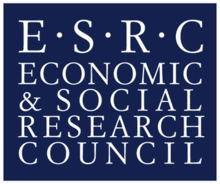Animals (Scientific Procedures) Act 1986 (ASPA)
Publications
This book features highlights from the Animal Research Nexus Programme to demonstrates how the humanities and social sciences can contribute to understanding what is created through animal procedures - including constitutional forms of research governance, different institutional cultures of care, the professional careers of scientists and veterinarians, collaborations with patients and publics, and research animals, specially bred for experiments or surplus to requirements.
Developing the idea of the animal research nexus, this book explores how connections and disconnections are made between these different elements, how these have reshaped each other historically, and how they configure the current practice and policy of UK animal research.
This article examines why early twenty-first century animal research governance in Britain foregrounds the ‘culture of care’ as its key problem. It adopts a historical perspective to understand why the regulation of animal research became primarily a problem of ‘culture’, a term firmly associated with the social relations of animal research, at this time and not before.
This paper explores what happens to care, and decisions about ending and extending life, when research animals become pets and pets become research animals. To do this, we draw on in- depth qualitative research on (i) rehoming of laboratory animals, (ii) veterinary clinical research, and (iii) the role of the Named Veterinary Surgeon (NVS) in UK animal research. Key contributions of our work include highlighting: how care roles can be split; the impor- tance of considering speculative and in-practice elements of care; the context-dependency and multiplicity of practices of killing in the veterinary clinic and laboratory; and the flexibility and changing nature of animal categories.
The increasingly global scope of biomedical research and testing using animals is generating disagreement over the best way to regulate laboratory animal science and care. Despite many common aims, the practices through which political and epistemic authority are allocated in the regulations around animal research varies internationally. This article proposes a framework for understanding and thinking across national differences in the regulation of animal research.
Animal research conducted outside of the laboratory faces various unique challenges, but has received only limited attention in terms of official guidelines, support, and statistics. To improve understanding, we held a workshop bringing together experts familiar with a variety of nonlaboratory animal research contexts (e.g., wildlife field sites, farms, fisheries, veterinary clinics, zoos). We collectively identified five key areas that we propose require further discussion and attention, which we present in this paper. While the workshop focused on research in the UK, our conclusions may have implications for similar work overseas.
Citizen science involves participation by members of the public in scientific research. In wildlife research, citizen scientists might be involved in the capture and handling of animals (e.g. via trapping, marking, and the use of tracking devices). Such work provides clear scientific benefits. However, it also comes with risks, including those to animal welfare. In this perspective piece we explore current regulations and questions around how best to regulate this work in order to ensure that it is undertaken in an ethical manner. We do this by drawing on qualitative social science research and stakeholder consultation with researchers, citizen scientists, and regulators in the UK.
These notes summarise some key topics of conversation at the workshop 'Out of the lab, into the field: Exploring animal research at POLEs', held on the 30th Sept-1st Oct, 2019, at Keble College, Oxford. Please feel free to share these notes with your colleagues and wider networks.
This Nature correspondence note, written by Gail Davies, explains the principles of the UK’s Animals in Science Committee (ASC) review of the processes of harm–benefit analysis (HBA) carried out under the UK Animals (Scientific Procedures) Act 1986 (ASPA).
Blog entry
Social scientists and historians have long observed that laboratory and field research are rather different (e.g., Gieryn, 2006; Kohler, 2002).
Can animals volunteer to participate in research? If so, what does volunteering look like, and what does it mean for animal welfare?
"How different does a fish really feel from one day to the next?" Zebrafish larvae become protected animals at the age of 5 days post fertilisation. At 4 days, they are not. Why is this?
Events
What kinds of ethical and practical challenges do wildlife researchers face? How do these challenges compare with those faced by researchers working with laboratory animals?
Announcements
The University of Nottingham as part of Midlands Graduate School is now inviting applications for an ESRC Doctoral Studentship in association with our collaborative partner, RSPCA, to commence in October 2019.
